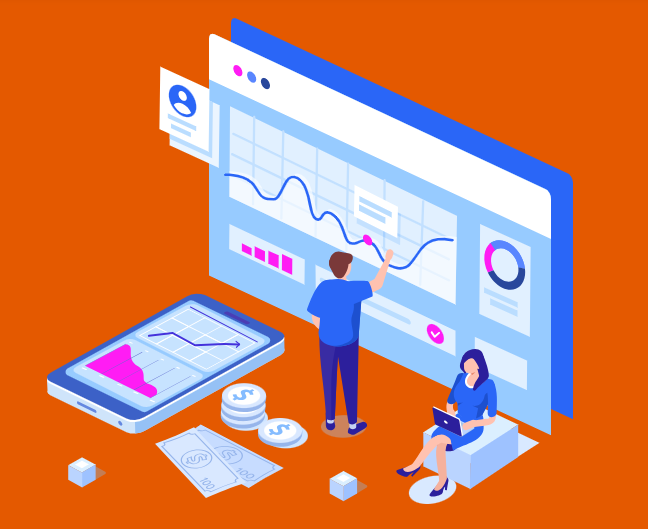Grasping the Concept of Website Personalization
In today’s world of competition, where it is essential to achieve more in less time, website personalization will remain one of the most effective tools for improving the quality of the user experience and increasing conversion rates.
This approach is closest to providing each client visiting the website a specific, custom experience of the website, created from their behaviour and previous actions. Through the application of advanced data tools and the latest technology, content, design and web functions are made to change and adapt to the user needs. This high level of customization brings about a high level of user satisfaction and usage of the website.
Personalization generally integrates the use of analyzed data concerning the user. Data like web usage history, consumer data, full details, and others involve creating and designing an individual web experience. When businesses can predict what a visitor is likely interested in, they can present relevant content, recommendations, and messaging that resonate on a personal level.
Other attributes that can be displayed on websites to enhance personalization include real-time dynamic content. These elements help the site engage users’ behaviour while on the site and instantly respond to it. For example, changing banners and product suggestions can align with a visitor’s interests, making the experience more pertinent and engaging.
The essence of website personalization is designing the website to make the perceived user interface distinct and reflect the individual character of each visitor. This individualized approach not only fulfils but also goes beyond the users’ expectations, fostering closer relationships with them and leading to more engagement with the brand.
Core Components of Personalization
Using user data and dynamic website elements is pivotal for effective website personalization. In the end, the users will be grouped, and the needed information, such as browsing history, demography, and purchase behaviour, will be compiled to create relevant content (Wunsch and Hauff 2017, p. 139). Such an action guarantees that the material being presented hits its targeted niche and the interests of the individual using the product.
Dynamic website elements are equally crucial. These elements enable real-time modifications to a website’s layout or content based on user actions. For instance, banners and product suggestions can be adjusted on the fly to reflect a visitor’s specific interests, enhancing the overall browsing experience. These elements can be integrated seamlessly to produce a better interaction and a more specific client scheme.
Besides, it is also possible to enrich personalization with other smart technologies, such as AI/Learning machines. These technologies can analyse large chunks of information to identify patterns that help the system foresee what users will do next. As a result, they assist in transforming businesses to deliver much more meaningful and precise personalization channels.
Another one is the possibility of the design being flexible to present information to the user. Adapting the website interface to the users’ preferences directly increases visitors’ usability and satisfaction. For example, changing the alignment of the site materials or changing the colour of the strip and button that lead to different sections of the site, with the user’s option, could increase the site’s effectiveness.
Personalization is another critically important area. Creating personal and relevant messages for the user has the potential to engage him/her and, hence, ensure that the target is achieved. From email marketing niche and segment marketing to advertisements and in-site messages, personalization assists in developing a closer relationship with the user.
Thus, such basic elements must be constantly applied and adjusted according to current needs. Regularly updating and refining personalization strategies based on user feedback and behaviour ensures that personalized experiences remain relevant and effective.
Effects on User Engagement
When users encounter content, they are open, particularly to those in their line of interest. This engagement is further improved through personalization, which makes the consumer feel individually addressed. Not only is this interaction more valuable, but it also prolongs the time users spend on the site and increases a variety of performance indicators.
This information can seize user attention better than general content. For example, targeted product suggestions or articles may catch users’ eye, and they extend their browsing session. This deeper exploration usually means more pages are viewed per visit; in other words, there is a bigger chance of making that conversion.
Moreover, people prefer to have specific experiences that help them find their way more easily and efficiently. The higher the level of perceived usability of the site, the more likely the users are to interact with some elements related to the site, such as tools, forms, or multimedia. Such an enhanced interaction leads to better user engagement as the users are comprehended much more appropriately.
The feedback loop is crucial in reinventing personalized features. This way, businesses can understand users better and suit their needs most appropriately. This makes the content long-term for the users, yet the feelings of boredom do not capture them.
Additionally, recommended personalized user journeys increase social shares and word-of-mouth promotion. A user who enjoys a positive and specific experience with the brand will then recommend it to others, gaining organic traffic for the brand. Further, this ripple effect enhances the values of personalization, allowing even more users to interact with the shared content.
Enhancing Conversion Rates
This way, businesses can better position users by leading them to purchase and thus have better conversion rates. Some methods that contribute to this success include personalized email marketing, product recommendations, and customized landing pages. Such methods ensure that only contents and offers akin to the users’ interests are presented, and hence, the users are encouraged to act upon them.
One prominent way to increase the effectiveness of marketing campaigns is to use custom landing pages that match the user’s preference. Feedback from users reveals that it is enticing when they visit pages they have indicated are of interest to them; thus, it becomes possible to encourage the usage of the offers to get converted.
In the same way, getting recommendations of products similar to those the users have easily made previous purchases spares the users the time of searching through many products they might not even purchase.
Another effective approach related to this is dynamic content in marketing emails. Sending personalized messages that address the recipient’s specific interests and past interactions with the brand can improve open and click-through rates. This maintains the brand’s continual presence and primes the users, ensuring that when the right call-to-action is presented, users will be prompted to finally convert.
Another area of personalization is aiming to achieve the greatest efficiency in checkouts. Simplifying the user journey by pre-filling information, offering relevant payment options, and providing personalized incentives such as discounts can reduce cart abandonment rates. Such slight changes make the purchase journey much easier and enticing, increasing the chances of a sale.
Furthermore, it is also possible to split-test different personalized aspects to understand what works best. The essence of these elements is that businesses can achieve the highest possible conversion rates through further enhancement of these factors by further enhancing them. This iterative approach helps identify the most effective personalization strategies and scale them to achieve better results.
Challenges and Their Solutions
Implementing website personalization is not without its challenges. Several of these include data privacy among patients and medical practitioners. The sites’ risks concerning user data are on the rise, which implies that user data should be honoured by not being collected without users’ permission. If that is not attained, it may cause a loss of confidence and bar people from accessing personalized solutions.
Another problem is more associated with technology and is more of a limitation in the process. Not all businesses can access advanced analytics tools and platforms for effective personalization. Investing in these technologies is crucial, as they enable efficient data processing and more accurate personalization. Smaller businesses might find this particularly difficult, but leveraging cloud-based solutions and third-party services can offer a more accessible entry point.
Filtering, sorting, and analyzing big data can also be challenging. When a vast volume of user information is available, scrutinizing insights becomes challenging. This process can be automated using machine learning algorithms and AI, but it requires skilled talent to operate and support it. Therefore, hiring or training human resources to support these technologies must be financially secure in the long run.
Another hurdle is the potential for personalization to backfire if not executed correctly. Poorly executed personalization can feel intrusive or irrelevant, alienating users instead of engaging them. Mitigating this risk can be as simple as ensuring that personalization efforts are subtle and valuable to the user. Regular testing and feedback loops can fine-tune these efforts, ensuring they align with user expectations.
Moreover, integrating personalization across all touchpoints can be complex. Ensuring the user gets a smooth experience is always important, but it is impossible without extensive planning on how a brand integrates different channels and media. This way, departments striving for cohesion of the overall personalization strategy would be limited in their attempts, and communication between them would be clear.
The Future of Website Personalization
Due to technological enhancements, the experience of website personalization is expected to become more refined and intelligent. These advancements include augmented intelligence and deep learning. Some of the technologies mentioned above can assist a business in tracking user actions or intentions more effectively and then deliver only the most suitable content or products to clients.
The second is hyper-personalization; this is further driven by real-time data feed. They took a more personal approach that can be further personalized to follow adaptations depending on a user’s behaviour. When using a site, the content and design can change in the blink of an eye, making the journey unique.
There is also increased demand for voice and visual recognition technologies as these provide additional possibilities for personalization. When these tools become more incorporated into the website, users will engage with more uniquely effective and engaging interfaces.
For example, with voice-activated searching, the customer can be sent directly to a specific area that will answer his/her question or meet his/her needs.
It is also noteworthy that augmented reality (AR) and virtual reality (VR) will support the development of personalization. These interactive technologies can be personalized according to the user’s interests.
In its most straightforward use, consider an ever-wish list virtual clothing store that suggests items based on the customer’s preferences or an AR app that recommends home arrangement options.
Overall, website personalization has a bright future because new technologies open opportunities for creating beneficial and exciting experiences for users. Companies that adapt to these trends are most likely going to. Layouts experience a high increase in user satisfaction and high conversion rates.



